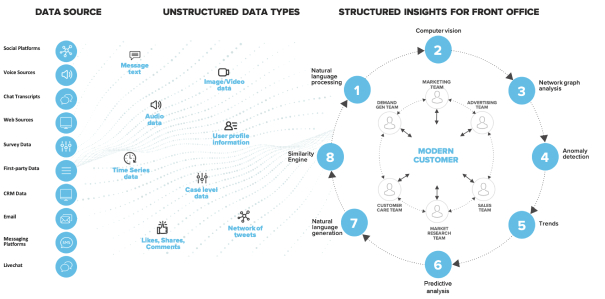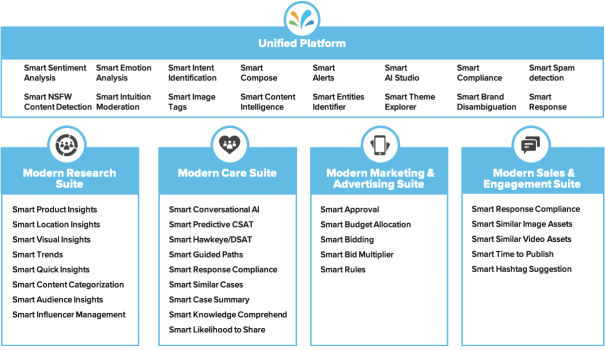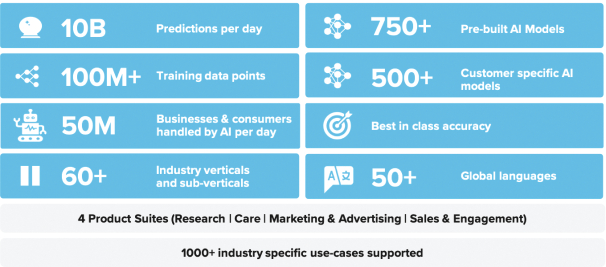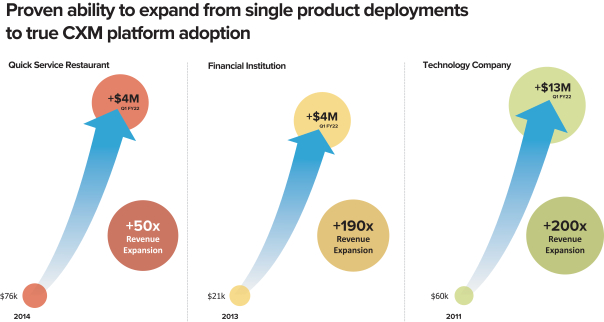The information in this preliminary prospectus is not complete and may be changed. We may not sell these securities until the registration statement filed with the Securities and Exchange Commission is effective. This preliminary prospectus is not an offer to sell nor does it seek an offer to buy these securities in any jurisdiction where the offer or sale is not permitted.
Subject to Completion. Dated , 2021
Shares

CLASS A COMMON STOCK
This is an initial public offering of shares of Class A common stock of Sprinklr, Inc. We are offering shares of Class A common stock.
Prior to this offering, there has been no public market for our Class A common stock. It is currently estimated that the initial public offering price will be between $ and $ per share. We intend to apply to list our Class A common stock on the New York Stock Exchange under the symbol “CXM.”
Following this offering, we will have two classes of common stock: Class A common stock and Class B common stock. The rights of the holders of Class A common stock and Class B common stock will be identical, except with respect to voting, conversion and transfer rights. Each share of Class A common stock will be entitled to one vote. Each share of Class B common stock will be entitled to ten votes and may be converted at any time into one share of Class A common stock. All shares of our capital stock outstanding immediately prior to this offering, including all shares held by our executive officers, directors and their respective affiliates, and all shares issuable on the conversion of our outstanding convertible preferred stock, will be reclassified into shares of our Class B common stock immediately prior to the completion of this offering. The holders of our outstanding Class B common stock will hold approximately % of the voting power of our outstanding capital stock immediately following this offering.
We are an “emerging growth company” as defined under the federal securities laws and, as such, we have elected to comply with certain reduced reporting requirements for this prospectus and may elect to do so in future filings.
See “Risk Factors” beginning on page 18 to read about factors you should consider before buying our Class A common stock.
Neither the Securities and Exchange Commission nor any other regulatory body has approved or disapproved of these securities or passed upon the accuracy or adequacy of this prospectus. Any representation to the contrary is a criminal offense.
|
Per Share |
Total |
|||||||
| Initial public offering price |
$ | $ | ||||||
| Underwriting discounts and commissions |
$ | $ | ||||||
| Proceeds, before expenses, to Sprinklr, Inc. |
$ | $ | ||||||
| (1) | See the section titled “Underwriting” for additional information regarding compensation payable to the underwriters. |
To the extent that the underwriters sell more than shares of Class A common stock, the underwriters have the option to purchase up to an additional shares of Class A common stock from us at the initial public offering price less the underwriting discounts and commissions.
The underwriters expect to deliver the shares of Class A common stock to purchasers on , 2021.
| Morgan Stanley | J.P. Morgan | Citigroup | Barclays | Wells Fargo Securities |
| JMP Securities | KeyBanc Capital Markets | Oppenheimer & Co. | Stifel | William Blair | ||||
Prospectus dated , 2021.




























